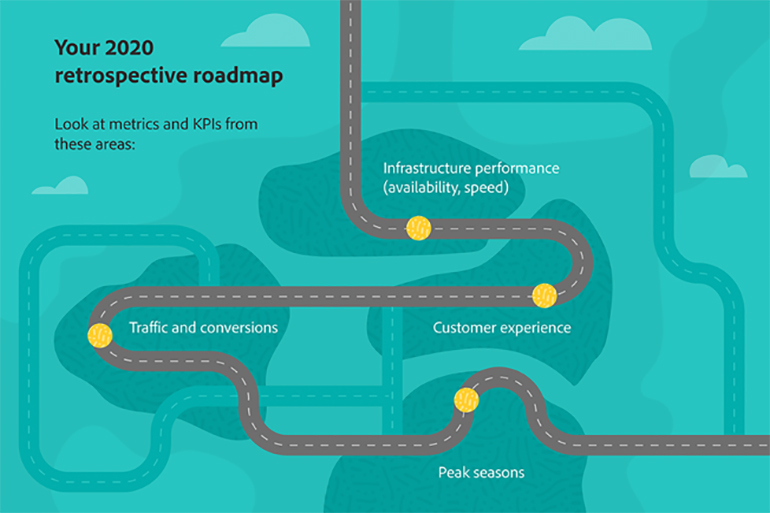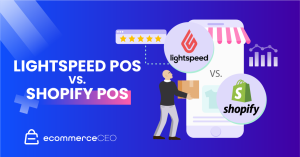It is hard to overstate how much eCommerce grew in 2020. According to data from McKinsey, eCommerce penetration accelerated by a decade during the first three months of 2020. And this high-velocity growth continued throughout the year. In 2019, digital retail sales reached $2 billion on only two days outside the holiday season. In 2020, more than 130 days exceeded that milestone—and the year ended with the single biggest Cyber Monday in history. And it is not just B2C that’s thriving: in a Digital Commerce 360 B2B survey looking towards 2021, over 80% of B2B respondents reported being at least somewhat likely to buy more online in the year ahead.
If you are nodding your head as you read these statistics, it might be time to think how your organization can learn from last year’s success. If your eCommerce business did not grow last year, then we recommend taking some time to look closely at your customer experience and consider all the ways you could pivot. In either case, with 2021 officially here, it is time to map out your eCommerce strategies for the year ahead and beyond.
Where to start? As you look ahead to the coming weeks and months, we recommend you take time to review metrics and KPIs from 2020 that highlight your wins, your losses, and everything in between. This post outlines a framework for conducting a retrospective analysis of your 2020 commerce performance that will help you grow faster, bigger, and better this year.
Why Act Now?
The beginning of the year is a hectic time. You may be working closely with leadership to set new goals, budgets, and staffing plans as well as to identify critical KPIs. With so much going on, your first instinct may be to postpone a detailed analysis of last year’s eCommerce performance until a quieter time in the coming months or once this year’s strategy is settled. But, choosing to delay can often prove to be a mistake—and fatal to your goals.
In today’s increasingly digital marketplace, your eCommerce strategy will likely make or break your companywide financial results. Already, over one-third (34.3%) of retailers now sell the majority of their products and services online. Meanwhile, Forrester predicts digital B2B sales will reach $1.8 trillion and account for 17% of all B2B sales in the US by 2023. In this environment, being ready to achieve success during your peak season sales can have an outsized impact on your annual revenue.
If you conduct a thorough analysis of your 2020 eCommerce performance now, you can position your company for success throughout the year, including during peak seasons. Timing this effort for the start of the year ensures that you have enough runway to develop the right content, marketing programs, and digital capabilities—and to launch them all at the right time.
Reviewing 2020 performance
Reviewing your 2020 performance can be done relatively quickly if you focus on the right KPIs and zero in on customer behaviors at each stage of the buyer’s journey. The framework outlined below identifies some key considerations for surfacing both potential problems and hidden opportunities.

Infrastructure Performance
How quickly your webstore can load pages and process transactions is critical to both your digital customer experience and your sales. Buyers tend to leave pages that take too long to load, and slow page load speeds can also hurt your Google rankings. Plus, frozen shopping carts and incomplete transactions spook customers and keep them from coming back.
To gauge how well your eCommerce infrastructure is handling traffic and transaction surges, look at two kinds of metrics:
-
Availability. These metrics tell you if your site was up and running consistently. Whether your eCommerce platform is on premises or on a third-party cloud infrastructure, you should be able to get an uptime/downtime report for the year. If you notice downtime during peak selling seasons, you might need to scale up your infrastructure and, as applicable, request stronger SLAs from your service providers.
-
Speed. These metrics tell you if your website is working fast enough. Examples include average page load times and transaction processing speed. Red flags like slow-loading pages and lengthy transaction processing delays suggest that your infrastructure needs attention.
If your metrics seem OK, but you have received negative feedback from customers, you can also work with your IT and development teams to test your website’s speed. This blog post can also help you ensure your infrastructure is ready.
The Customer Experience
As customers shop online more and more online, their expectations are rising. They want a personalized experience that includes well-organized category pages, thoughtful content and product recommendations, and individualized offers. They also want to see the current status of all their orders from all your channels in one place—and to get help when they need it.
When customers get this kind of experience, they are more likely to buy, recommend, and refer your products. A survey by Accenture found that 91% of consumers are more likely to shop with brands that recognize them and provide relevant offers. Likewise, research by BCG shows that best-in-class personalization can increase average order value (AOV) by 10–20%.
When you evaluate your customer experience from 2020, here are some things to consider:
-
Does your website refresh content often (for example, every day or every week)?
-
Does your website serve up personalized content and offers based on shopper behavior?
-
Does your website offer personalized product recommendations?
-
If so, do you use machine learning or AI to generate recommendations?
-
Do you provide recommendations in real time?
-
Do your recommendations perform well with new and existing customers?
-
-
Can customers easily check on their order status?
-
Does your website offer live chat?
-
If so, is it easy to start?
-
Is it powered by humans or intelligent AI rather than a manual script?
-
If you answer “No” to any of these questions, you have an opportunity to improve customer experience. And as you consider functional priorities for next year, you can learn more about key elements of an engaging digital customer experience from the following Magento blog posts:
Traffic and Conversions
Traffic and conversions is where the rubber meets the road. In addition to making sure you offer a well-rounded and fully functional customer experience, you must also ensure that your website is attracting the right visitors and converting. It’s important to look at your traffic and conversions for all of 2020 as well as during peak seasons and sales events. Here are some KPIs to consider:
-
Site traffic trends, especially how traffic compares between last year and this year
-
What kinds of traffic (mobile, desktop, channel referrals, etc.) converted most and least
-
Which landing pages converted most and least
-
Which offers and seasonal promotions converted most and least
-
Which products were most and least likely to convert, and at which times of year
In general, pay attention to the extremes at both ends of the spectrum—big successes and big failures—and look at them from as many dimensions as possible. If you end up with a lot of unanswered questions, you may also want to identify new KPIs to track over the current year.
Peak Seasons
When you look at your sales data for 2020, identify any particular days or time periods in which traffic and sales are exceptionally high. We call these peak seasons, and preparing for them is especially critical because they often represent a very large share of your annual revenues. Examples of peak seasons include Black Friday and Cyber Monday, Valentine’s Day and Easter for chocolate companies, late spring for swimwear companies, and so on. B2B companies can also have peak seasons that are tied to customers’ fiscal quarters or years.
After you identify peak seasons and other planned traffic or sales events, take a deep dive into the strategies that worked—and did not—in 2020 and plan for this year’s biggest selling opportunities right now. This includes defining your eCommerce experience, developing marketing and sales strategies, and identifying KPIs. Review the following posts in Our Peak Season Performance blog series for help getting started:
What If You Sell to Other Businesses?
B2B businesses that sell to wholesalers or via distributors may have some special considerations. As noted above, their sales may not be related to holidays at all, but rather to quarterly budget deadlines and procurement cycles. Also, many businesses have reduced spending in the face of ongoing economic uncertainty, which means they need to find creative ways to increase revenues.
Two digital strategies businesses may want to consider in 2021 are:
-
Upgrading their online experience: Many B2B businesses that have not fully digitized experienced slow or no growth in 2020. Making it easier for business buyers to engage and purchase online—with or without help from a sales rep—can help you quickly grow sales. Key features you’ll need for B2B selling include customer-specific product catalogs and pricing, online price quotes and configuration, automated approval workflows, and support for seller assisted shopping. You can learn more about key considerations for online B2B commerce from our B2B Commerce Best Practices During COVID-19 — and Beyond blog post.
-
Adding a direct-to-consumer website: Some B2B business offer products that can be sold to both businesses and consumers. For example, this is true of many consumer packaged goods companies that sell through grocers and through their websites. If your business has a product you could sell to consumers, consider adding a direct-to-consumer website to your eCommerce platform. This may be easier than you think with Magento Commerce, which is designed for “hybrid” B2B and B2C use cases. And, with some careful planning, it’s also possible to minimize channel conflicts.
Taking Action
As you complete your look back on the previous year, you may see some obvious places to make immediate changes. For example:
-
If your website crashed or slowed down during last year’s biggest sales period, you’ll want to make infrastructure a priority—and address it now rather than attempting to make just-in-time updates.
-
If your mobile conversation rates are low but your mobile traffic is consistently high, you may want to consider redesigning your mobile experience.
-
If your conversion rates are lagging overall, you may need to drill down into possible explanations—pricing, product messaging, page designs, and so on—and also choose new KPIs to monitor in the coming year.
We hope you’re feeling inspired to take a closer look at your eCommerce results from 2020, as well as your overall online customer experience. This 360-degree website assessment is a great place to start.



